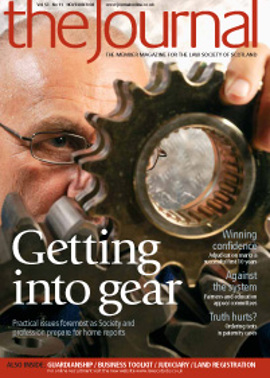Inventive judging?

To what extent is patent protection available for computer-implemented inventions in Europe?
The term “computer-implemented invention” means an invention which involves the use of a computer and a computer program. It therefore covers software and e-commerce related inventions, together with business method inventions which are realised using a computer and software.
As a matter of policy, the extent to which such inventions should be patentable has always been controversial. For example, does the availability of patents for software stimulate technological innovation, or does it stifle software development by diverting innovation time and effort towards ensuring that developers are not infringing third party patents? Are prior-art searches practicable for computer-implemented inventions? Is copyright protection sufficient? Does Europe need to adopt a more liberal approach to granting patents for computer-implemented inventions to compete with other markets such as the US?
As a matter of practice, the question has given rise to complex and divergent decisions of national courts, national patent offices and the European Patent Office (EPO), despite the fact that they have been based on applying legislation which is, in principle, uniform.
The Symbian decision
The recent decision of the Court of Appeal in Symbian v Comptroller General of Patents [2008] EWCA Civ 1066, 8 October 2008 has clarified the test to be applied in England & Wales when determining whether a computer-implemented invention may be patented or not. In doing so, it has sought to adopt an approach which reconciles the apparently contradictory approaches adopted to date by the Court of Appeal and the EPO Boards of Appeal.
The decision relates to Symbian’s application for a patent entitled “Mapping dynamic link libraries in a computing device”, concerning an improved method and software for accessing functions in a dynamic link library. The claimed invention may be applied to many electrical devices including computers and mobile phones, enabling them to work faster and more reliably.
The Comptroller had refused Symbian’s patent application on the basis that it was a program for a computer as such and therefore excluded from patentability (see below). Symbian had appealed successfully to the High Court and the Comptroller had appealed in turn to the Court of Appeal.
The Court of Appeal, upholding the High Court, explained its decision by reference to the relevant provision of the European Patent Convention (“EPC”), article 52 (see panel).
At first sight, computer programs appear to be excluded from patentability in Europe by the express language of article 52(2), which appears to exclude not only “programs for computers” but also, among other things, “mathematical methods” and “methods for performing mental acts … or doing business”. However, article 52(3) provides that the exceptions only exclude these matters “as such”.
Divergent authorities
When considering software patentability, the EPO Boards have tended to focus on the “technical contribution” or “technical character” of an invention, interpreting the “as such” requirement of article 52(3) as referring to cases in which the invention has no “technical character” or makes no “technical contribution” to the known art.
The Court of Appeal, in its decision last year in Aerotel v Telco/Macrossan [2007] RPC 7, suggested that it might be adopting a different approach. It adopted a four stage test for assessing patentability which involved checking for a technical contribution after considering excluded subject matter:
“(1) properly construe the claim;
(2) identify the actual contribution;
(3) ask whether it falls solely within the excluded subject matter;
(4) check whether the contribution is actually technical in nature.”
In Symbian, the Court of Appeal has sought to reconcile the two approaches, observing that there is no reason why the test as to patentability should not turn on whether the contribution can be characterised as “technical”. Such an approach may be reconciled with the Aerotel four stage test simply by conflating the third and fourth stages.
The Comptroller argued that a computer program is excluded from patentability unless it has a novel effect outside the computer (i.e. a program for an improved system for manufacturing a product, or for performing a new or improved function on any machine would be patentable, unless the function was only performed on the computer itself). In support, it was argued that there is no reference to any “technical” requirement or test in article 52 and that the meaning and effect of the term have not been explained by the EPO Boards.
Symbian argued that the exclusion excludes only programs which do not provide a technical solution to a technical problem. A program which improves the performance of a computer would not be excluded any more than a program which improved the performance of any other machine.
The Court of Appeal found in favour of Symbian. The invention made a technical contribution and did not therefore fall within the article 52(2)(c) exclusion. It could be said that the Symbian instructions “solve a ‘technical’ problem lying with the computer itself”. “As a matter of [practical] reality there is more than just a ‘better program’, there is a faster and more reliable computer.”
Future practice
The Symbian decision will be welcomed by those who wish to patent computer-implemented inventions in the UK. Contrary to the former view and practice of the UK Intellectual Property Office (that a computer program is not patentable unless it makes a contribution outside the computer), the Court of Appeal has held that “a technical innovation, whether within… or outside the computer, will normally suffice to ensure patentability”.
A practice note is awaited from the UK IPO, setting out its interpretation of the decision and how it proposes to alter its practice to accord with it.
From a Scottish perspective, the Symbian reconciliation of the case law of the EPO Boards of Appeal with that of the Court of Appeal is certainly of relevance insofar as it impacts on the practice of the UK IPO when considering patent applications and the patentability of computer-implemented inventions. However, it may be of less significance in court proceedings. It may be easier for the Court of Session, when considering software patentability issues, to ensure alignment with the approach of the EPO given that Court of Appeal authorities such as Gale [1991] RPC 305, 323, Merrill Lynch [1989] RPC 561, Fujitsu [1997] RPC 608 and Aerotel are not binding on it as they were for the Court of Appeal in Symbian.
The next instalment…
The President of the European Patent Office has just referred a point of law – concerning the application of the exclusion of computer programs as such – to the Enlarged Board of Appeal of the EPO (case G3/08, referral of 22 October 2008). The referral raises four questions, one relating to the form of claims and three relating to where the line should be drawn between those aspects excluded from patentability and those which contribute technical character.
It raises, in particular, concerns that some decisions of the EPO Boards of Appeal have given too restrictive an interpretation of the breadth of the exclusion (i.e. that they have found inventions to be patentable which should have been caught by the exclusion). The referral also expresses the hope that it will lead to more clarity concerning the limits of patentability in this field.
Although there are many reasons to welcome the referral, in the short term (pending the decision, which may take of the order of one to two years) there remains significant uncertainty and there is likely to be considerable political debate as to where the software patentability balance should be struck. It is likely that large numbers of patent applications will be held up pending the outcome.
In the longer term, however, it is to be hoped that the referral will result in an authoritative decision, clarifying for the future the limits of software patentability in Europe.
In this issue
- Support where it's needed
- Prevention or cure?
- Gearing up for change
- A time for support
- Foreign companies and the Registers
- Sensitive relations
- New course for the courts
- Adjudication – 10 years on
- Jack's story
- Professional Practice Committee
- Sourcing our future
- Data security begins at home
- Going equipped
- Bonus round
- Nothing But Delivery
- Checking out checklists
- The final word
- Redundancy: an age old issue?
- Cohabitation update
- Inventive judging?
- Scottish Solicitors' Discipline Tribunal
- Website review
- Book reviews
- Beating the credit crunch
- Keeping a clean sheet
- Battening down in buy-to-let






